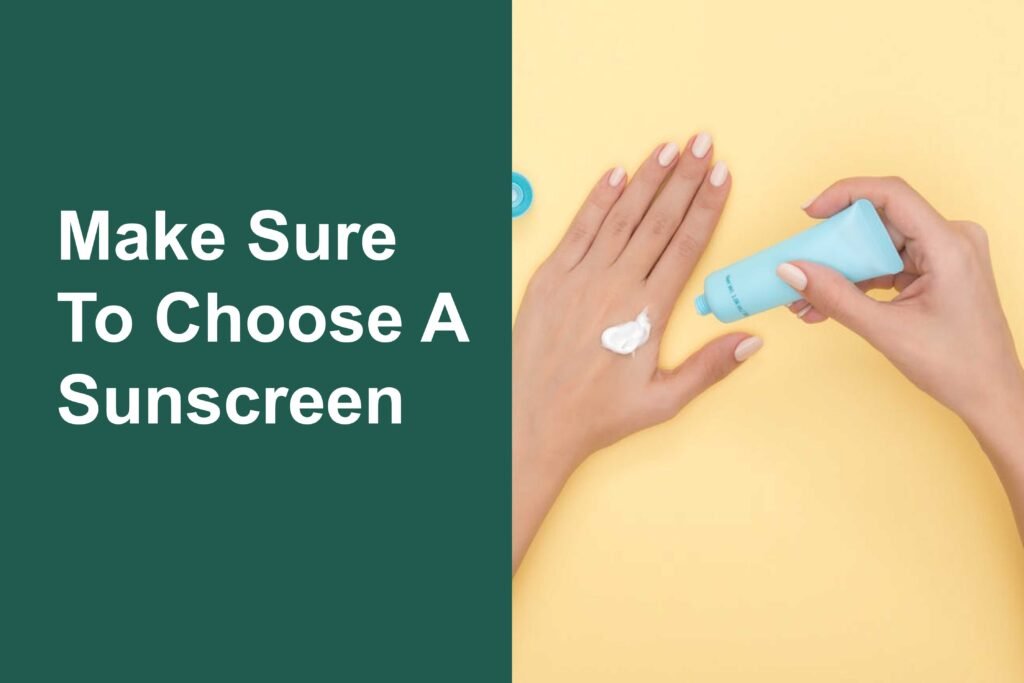I gently pinch my undereye skin to determine if my dark circles are pigmentation or due to thin skin. If the darkness remains when I pinch, it’s pigmentation; if it disappears, it’s because my undereye skin is thin, allowing veins to show through and create darkness.
For the pigmentation issue, I’ve started using a retinol eye cream (I’ve heard great things about The Inkey List’s version) along with religiously applying SUNSCREEN!!
When my dark circles are due to thin skin, a vitamin C eye cream has been my go-to. It boosts collagen production, which thickens my skin and reduces the visibility of veins. Sunscreen is crucial here too, to protect the delicate skin around my eyes.
I always make sure to choose a sunscreen without octocrylene or opt for a mineral one, like a sun stick, which I find more practical. To prevent sunscreen from irritating my eyes, I set it with powder so it doesn’t migrate.
I’ve learned that dark circles aren’t just a skin issue—they often won’t go away with skincare alone (99% of the time).

One trick I’ve found effective is gently dabbing red lipstick under my eyes, letting it sit for a minute or two, and then applying a lighter shade of concealer over it. This method blends well and helps disguise the darkness.
I’ve tried various remedies I read about, from eye creams to cucumbers, but I wanted advice from real people, not just copied articles. My dark circles have been quite severe—I often look like I’m either high or drunk in every picture from the past 15 years, and I’m only 33, so I’m optimistic about improving my skin’s condition.
During particularly bad periods, I’ve used an ice pack wrapped in a damp washcloth to numb my under-eye area. It takes some time, but it does help reduce puffiness and dark circles.
I recently consulted a dermatologist who informed me that dark circles can be hereditary and difficult to treat with topical solutions alone. She advised against wasting money on eye creams but emphasized the importance of adequate sleep—a recommendation echoed by her assistant.
Personally, I’ve seen great results with eye creams containing retinol and collagen. Over the past year, I’ve noticed a significant improvement in the appearance of my eyes. I used to always notice the circles when I looked in the mirror, but now I have to look from certain angles just to see them.
My research into dark circles led me to understand more about overall skincare. I’ve developed a routine of rinsing and moisturizing my face several times a day, which has likely contributed to my improvement.
Collagen has been a game-changer for me. A friend in his late 40s recommended a Korean collagen treatment involving three creams after showering. I tried it for a month, and not only did my dark circles disappear, but the pores around my nose also diminished significantly.
I’ve even created my own night cream recipe: I mix glycerine, Vitamin E capsules, and coffee powder in equal parts, sometimes adding a bit of almond and castor oil. Applying this nightly has reduced my dark circles by at least 40% in just 20 nights.

If you suffer from eye bags, hollows, or discoloration as I did, you might benefit from undereye fillers such as Restylane. It might seem extreme, but if dark circles bother you as much as they did me, consulting a dermatologist for options like IPL or prescription creams could be worthwhile. Retinol treatments have also been recommended for maintaining skin health.
Improving my hydration, diet, and sleep habits has been crucial. I’ve known friends whose job prospects were affected because they appeared tired due to dark circles. In their case, late-night gaming and inadequate sleep were the culprits.
A proper moisturizing routine and adequate sleep have been my allies in combating dark circles. It’s never too late to start a solid skincare regimen.
I’ve found that monitoring my diet has also been important. I used to be asked frequently if I’d been in a fight because of the dark circles under my eyes resembling black eyes.
In my late teens, I was diagnosed with coeliac disease and went gluten-free. Within months, my dark circles disappeared and have never returned in the 25 years since. This taught me that very dark circles can signal a need for dietary changes, though not necessarily a gluten-free diet.
After trying everything else, I opted for filler about a year ago. It’s been the most effective solution for me, lasting either one or two years. I prefer this to daily creams. There’s also an under-eye bleaching cream from dermatologists that works well with consistent use, although it can leave a somewhat bleached appearance that isn’t entirely natural.
For guaranteed results until bedtime, concealer is the way to go. Some of us are simply genetically predisposed to dark under-eyes. If this bothers you as much as it did me, makeup might be worth considering.

I’ve found that applying cool tea bags, fresh out of the tea, for a minute or two can visibly reduce dark circles. Just be careful not to burn yourself.
As a nurse, I’ve learned that environmental allergies can also contribute to dark under-eye circles. Trying over-the-counter allergy medications might provide some relief.
If all else fails, remember that dark circles are often hereditary. If improved sleep, reduced alcohol consumption, and other lifestyle changes don’t help, concealer may be your best option. Eye creams containing Vitamin K are said to offer some benefits, although I haven’t personally tried them.
Like many others with dark undereye circles due to genetics, I’ve found success with a product called Banana Bright Eye. It includes Vitamin C and collagen, which I apply morning and evening. When applying any eye cream, I use my “ring” finger for its gentle touch, tapping the cream delicately onto my thin, delicate undereye skin.


